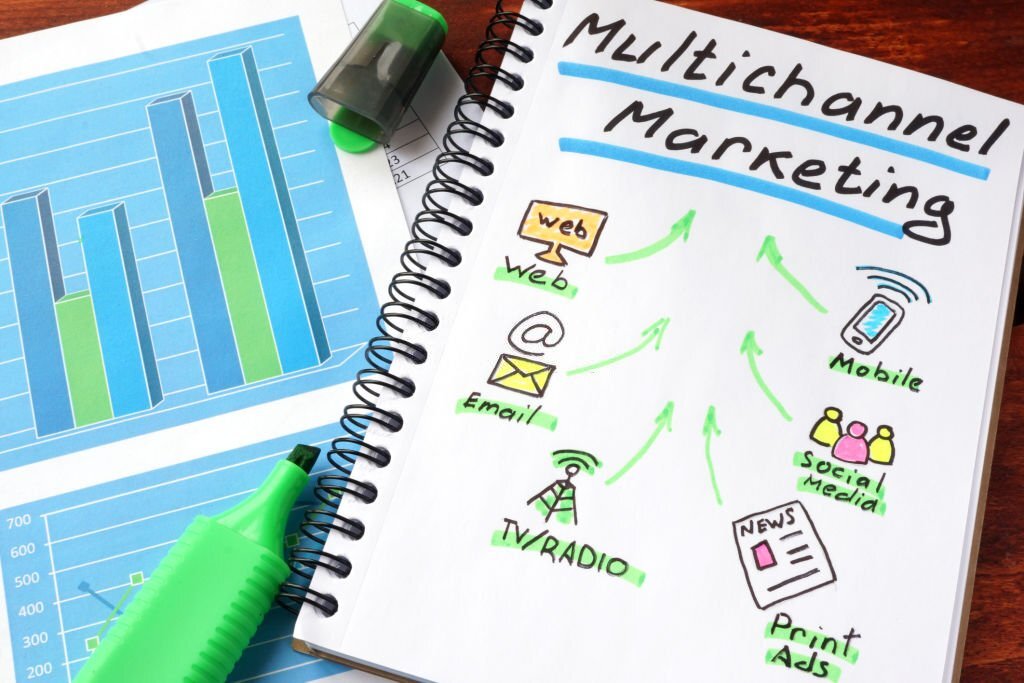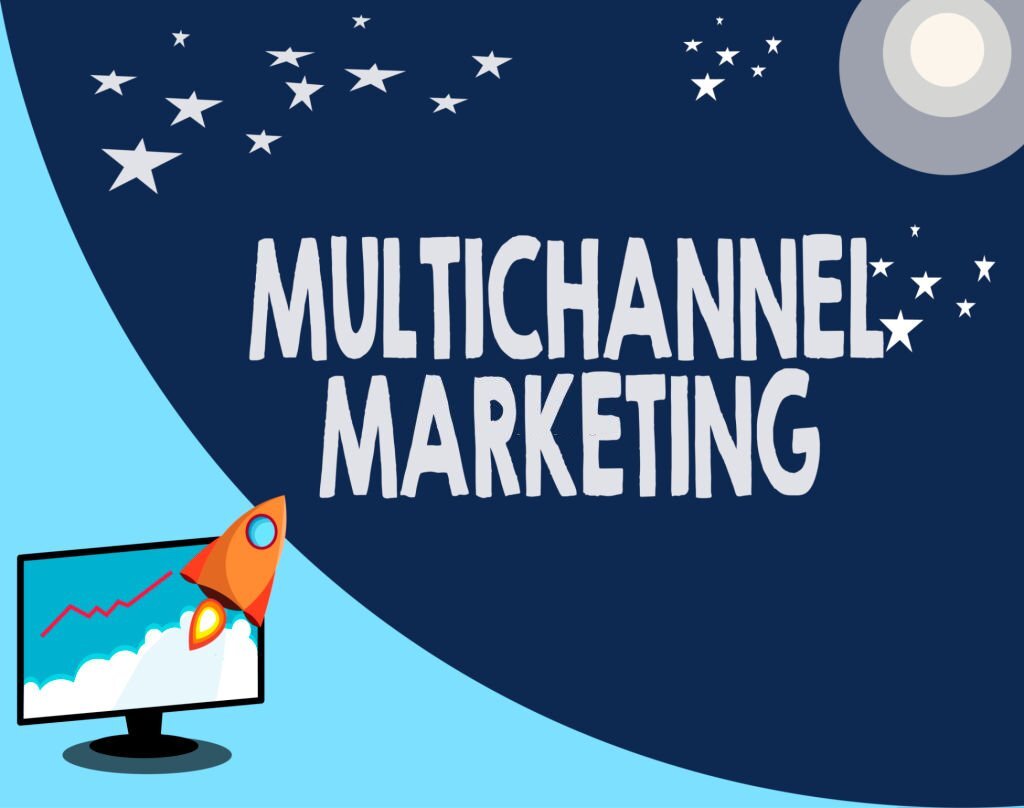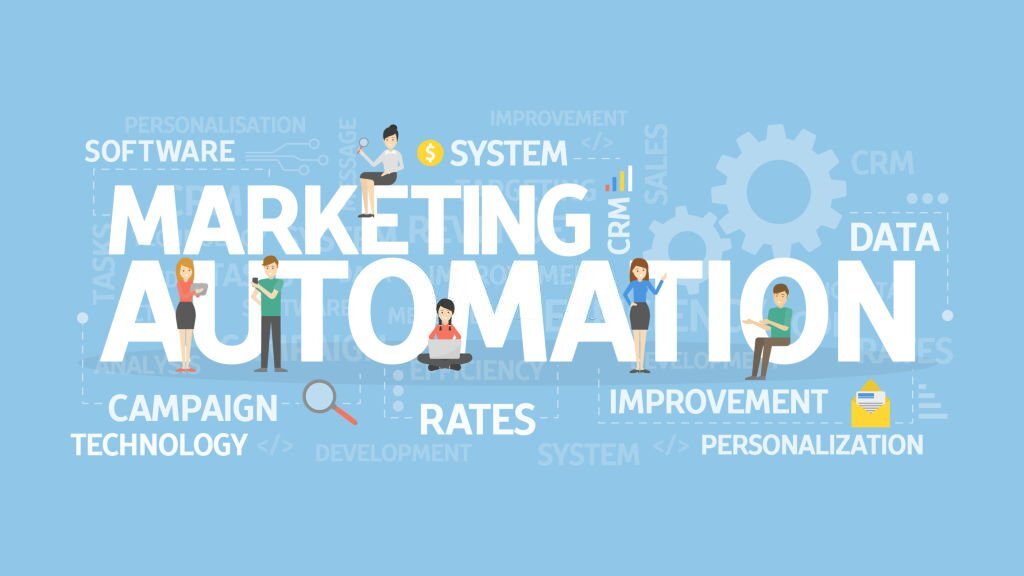In the last decade, we have witnessed an increase in the number of channels used before conversion from 1.25 to 3.25. Customers do not restrict themselves from only buying from retail stores anymore. Instead, businesses have compelled customers to shop online due to multi-channel marketing.
If today a consumer wishes to buy a piece of the shirt they saw in-store, they now might not purchase it instantly. They will go on the internet and seek more information about the shirt. After gathering enough data, the customer decides to buy it online since they do not have to go to the shop and conveniently shop while sitting at home.
Businesses that function without preparing a strategy to attract more customers across multiple channels would face an uphill battle to be successful. The current generation prefers to buy their product from various channels instead of mono-channel shopping. They do so in search of the best deal possible. Therefore, it has become imperative for businesses to expand through multi-channel marketing.
What is Multi-Channel Marketing

Multi-channel marketing, also referred to as omnichannel marketing, allows businesses to use both offline and online marketing communication channels to interact and engage with their targeted audience.
Businesses can target their potential customers through digital marketing strategy over websites, social media platforms, email, messages, ads, etc. Those companies who wish to market their product on an individual channel in today’s time will never attract a large audience. Today, customers choose to buy their product in-store, on the internet, or through a sales rep on call.
Since there are many marketing channels, businesses need to ensure that they remain accessible to their potential customers. Multi-channel marketing campaigns are about availing an option to the customer where customers can buy the product at their convenience.
Through multi-channel marketing strategies, businesses primarily look at ways to converge multiple channels within one, allowing businesses to thrive. Since companies advertise on various media, it becomes difficult for customers to determine the most impactful channel. By inquiring into which channel had the most impact on the customer, multi-channel marketing campaigns can become more efficient.
While doing multi-channel marketing, businesses need to be aware of how to do targeted marketing. Customers get attracted to those businesses which can send them a personalized message on their chosen channel.
Why You Cannot Ignore Multi-Channel Marketing
Infosys conducted a study that revealed that 59% of the customers were attracted to businesses that sent them personalized messages. However, creating a personalized message is not that simple. While creating a personalized message for the customer, marketers need to build a single customer view, which comprises information from all other channels.
Only 25% of the businesses in 2015 were able to send personalized messages successfully (study by Econsultancy). Building a customized message for the customer is the primary goal of successful cross-channel marketing.
Through cross-marketing channels, companies can build a controlled environment for the customer. It ensures that customers don’t get a completely different experience when they go onto its main website. In 2015, 73% of the businesses claimed that cross-channel marketing directly impacted their customers.
For instance, a customer who had visited Amazon’s website added a washing machine to his cart. However, he did not purchase it at the moment. Later, while the customer was on Facebook, they saw an Amazon ad for the same washing machine on their screen. This helps to ensure that customers constantly engage with the business through cross-channel marketing. Despite being on a different channel, the customer is still looking at the same product.
This is why companies need to keep cross-channel marketing in mind. While multi-channel marketing allows businesses to establish their presence over various channels, cross-channel marketing takes it further. Cross-channel marketing ensures that customers can get a seamless experience and get the same product once they navigate the main website.
Types of Multi-Channel Marketing
Multi-channel marketing aims to achieve sales targets set for a particular product. In their attempt to achieve the same, businesses often market their products over various channels.
However, this is one of the biggest mistakes which companies make. With multi-channel marketing, businesses assume that they have established their presence in all marketing channels. Since customers are present everywhere, they believe that their expansion needs to happen over all platforms. However, this assumption does not guarantee success at all.
Every marketing channel will not attract customers to the business. Businesses need to keep in mind that it is not necessary to market their product on Instagram, Snapchat, etc. Companies need to identify which channels would generate a large customer base and which would not. Specific forms of businesses might be more content-oriented and therefore need to focus on blogging. Others might have to expand their presence through videos, vlogs, podcasts, etc.
Digital growth marketing agencies need to focus their digital efforts on those channels which would target their potential audience. Instead of diversifying into multiple channels, businesses must understand where their target audience is present in large numbers.
Demographic factors play a pivotal role when looking at the targeted audience. Pew Research, a Think Tank, found out that Gen-Z primarily uses social media platforms such as Instagram, Snapchat, and TikTok. On the contrary, platforms such as Facebook and YouTube are used by the older generation.
For example, if the targeted audience for your product is above the age of 50, then marketing your product over Snapchat or Instagram would not gather many audiences.
The above graph depicts that people are utilizing and engaging with different social media platforms depending on their age. Along with keeping the age group in mind, growth marketing agencies also need to remember the kind of content that these age groups are consuming. Certain age groups prefer blogs, while others prefer videos and podcasts.
Therefore businesses need to conduct their research. They need to dwell in those social media spaces where they will be able to engage with their targeted audience at large. Instead of establishing your presence everywhere, companies need to keep in mind the correct age of the group for the product.
Companies prefer to advertise their products through the following channels:
- Social media platforms
- Websites
- Television
- Messages
- Retail stores
Benefits of Multi-Channel Marketing
Tradition marketing forced companies to restrict themselves to billboards, flyers, etc. However, multi-channel marketing removes that inhibition from the businesses. Through multi-channel marketing, companies can attract more and more customers.
Businesses now broadly advertise through social media platforms such as Facebook, Instagram, YouTube, Snapchat, etc. They can interact with their targeted audience at a much faster rate. This helps the business to grow at a much quicker pace. Keeping this in mind, we will now look at some of the benefits of multi-channel marketing.
1) Enlarging the Customer Base
Companies that market their product on a single channel face multiple challenges. One of the biggest challenges is extending their reach to a targeted audience. If companies market on one particular channel, they are bound to lose customers as soon as the customers change their track.
Multi-channel marketing helps to deal with this issue. Through this approach, businesses can easily find new leads, which would allow them to interact with their audience at a much faster rate.
Before selling a product, companies need to ensure that they follow the right leads. Marketing teams and growth marketing agencies are responsible for finding these leads.
By maintaining your presence over social media platforms, marketing teams and other growth marketing agencies will be able to find more leads for their sales.
One way of doing it is by combining multi-channel marketing with a customer data platform (CDP). By doing this, companies can easily focus on those channels which would generate large audiences for their respective product.
2) Making the Process Easier for Customer
The time between viewing the marketing message and buying the product is significant. The longer they take to confirm their order, the less is the chance of them buying it.
Multi-channel marketing helps companies overcome this issue. With this strategy, customers on their preferred channel can view your product and buy it. This reduces the time between looking at the development and buying it. Therefore the key is to engage with the customer when their interest is at its peak.
Businesses adopt multi-channel marketing so that customers can easily view and buy the product on their preferred channel. Along with this, it also helps to develop a relationship between the company and the customer. Customers can view the company’s message over various platforms.
3) Advantages of Marketing on Different Channels
While any marketing channel can be perfect for a company under favourable circumstances, it can be less than optimal in other situations. Multi-channel marketing allows businesses to take advantage of various channels while being mindful of their setbacks.
Companies can merge each channel they are targeting into one multi-channel marketing advertisement. Each lead that the marketing team gathers will reflect how receptive your brand is to specific media. As discussed before, different age groups prefer other channels.
Therefore, one of the most significant advantages of multi-channel marketing is that it permits them to target the audience on the channels customers use the most. Subsequently, companies also engaged with customers who were present on other platforms through this strategy.
4) Advantage Over Competitors
We all know marketing online is highly competitive. There are so many options available to the customers to buy from. This creates uncertainty about whether the customer will buy from you or not. Multi-channel marketing helps you to reduce this uncertainty.
Businesses can gain considerable advantage by marketing their product on a channel where competition lacks presence. Subsequently, companies can keep a check on other companies to gain insights into their operation. Companies can exploit this and capture the audience’s attention before others do.
Multi-channel marketing is highly impactful. Apart from establishing a presence on various websites, companies can even interact with their customers.
5) Taking Advantage of Leads
Multi-channel marketing strategy allows businesses to use different channels and convert them into a single operation for marketing.
For example, you can send a message about your product to the customers during a marketing campaign. Once they have opened your message, you can send a discount code right after.
In cases of retargeting, you can contact the customer through messages and follow up via email.
This also helps to reduce the overall cost and can induce faster returns on investment. Email is the best platform that provides speedier ROI. It costs less as compared to other channels. While email offers more immediate ROI, we suggest you diversify. Other channels are relatively inexpensive when you look at the benefits they have to offer.
How To Create a Successful Multi-Channel Marketing System
Today businesses and large organizations are flourishing owing to the multi-channel marketing system. However, small companies might not be able to achieve this.
In this blog page, I will be looking at how all businesses can create a successful multi-channel marketing system.
SOSTAC Framework
To ensure the success of a multi-channel marketing system, a business must remember the SOSTAC structure. SOSTAC is a framework for structuring and marketing plans and is easy to understand. It provides you with a clear structure that you can utilize to create and manage your project. It comprises the following.
1) Situation Analysis requires businesses to ask, ‘Where are we now?’ For companies, adopting the SOSTAC framework answers these questions:
- What is the competition up to?
- What benefits the competition?
- Are we measuring the results accurately?
2) Objectives mean ‘What can we achieve?’
- Whether there is going to be potential growth or not?
- Can we build a forecast for the leads which show an increase?
3) Strategy requires businesses to ask, ‘How do we achieve that?’. The strategy provides ways to achieve the set objectives. It is one of the essential parts of the SOSTAC structure. Strategy can help you answer the following questions:
- What position will the company adopt?
- Which channels will help them focus on their targeted audience?
- How can targets be achieved?
4) Tactics include the strategy which needs to be adopted. This helps the company identify which tactic needs to be used.
- How to improve communications?
- How to harness marketing automation?
- How do you harness content marketing to generate leads?
The RACE Framework
The Race Framework primarily comprises:
(Plan) > Reach > Act > Convert > Engage
Race framework involves the creation of an initial plan which looks at strategy, objective setting, and plan.
The four steps of RACE help companies interact with their customers seamlessly. This framework has been elaborately explained below.
1) Reach
This involves building traffic by advertising your social media pages on various platforms such as Facebook. It helps build awareness and brand visibility which can help grow the business. It also includes maximizing business reach over time to create engagement at multiple levels.
2) Act
Act or interact promotes interaction with customers on various websites and social media platforms. For businesses, the primary action is to create leads. Subsequently, it also involves convincing customers to visit your website. Once they visit, the next step requires them to conveniently find the product they are looking for. Customers should be able to move through the website quickly.
The website should include “viewed products,” “add to basket,” “sign-up or sign-in,” etc. Act also includes sharing the products over social media and amplifying customer reviews.
3) Convert
Convert means requiring the customer to make the purchase either online or offline. Potential customers need to become regular customers. They have to buy the products either on eCommerce websites or in the retail store.
4) Engage
Engagement does not just mean interacting with the customer for a short period. Instead, it means developing long-term communications between the customer and the company. First-time buyers have to be converted into loyal customers who keep repeating their purchases from the company.
Personalized emails and messages containing positive incentives such as discount coupons etc., need to be sent to this customer. This would help in increasing customer lifetime value.
Subsequently, apart from actively engaging with new customers, maintaining relations with existing customers is essential and building brand loyalty.
Companies With Successful Multi-Channel Marketing Strategy
Multi-Channel marketing strategies have allowed businesses to expand and grow at an unprecedented rate. Companies are not advertising and running campaigns online. This helps them to engage with their potential and targeted customers constantly.
Companies such as Apple and Uniqlo, which today dominate the market, adopted the multi-channel marketing strategy. We will now look at companies and their adopted multi-channel marketing strategies that have helped them expand their business.
1) Apple
Apple is one of the most valuable brands in the world. Its ability to capture its audience seamlessly is the primary reason for its success rate. Apple creates and follows those leads, which quickly helps the customer’s lives.
Apple’s multi-channel marketing strategy requires them to remain relevant to people’s lives. It also ensures that customers can complete their journey till purchase without any challenge. This helps to reduce the period between reviewing the content and buying the product. Subsequently, even the packaging style can bring coherence to the overall style of familiarity.
Apple can build an environment within the stores which are unparalleled to any other store. This is because stores are designed to showcase how customers will feel while using the product. It does not solely rely on the product itself.
The experience within the store is highly interactive. Be it using the product within the store before its purchases or booking an appointment for service, Apple can create a seamless experience.
The relationship between the customer and company does not end there. Once customers have purchased the product, they can even buy additional apps on iTunes. This includes music, entertainment, other merchandise, etc.
Even though the products are available at a lower price on other websites, users prefer to buy from Apple. This is primarily because of the experience customers get with Apple. Subsequently, the process is faster, reliable, and more straightforward.
2) Burberry
One of the most profoundly known brands in Asia that are known for its success in multi-channel marketing is Burberry.
The primary reason is that its reach extends beyond Facebook, Twitter, and Instagram. It even dwells in WeChat and Japan’s Line. Simultaneously, it has also included these brands in live-streaming to provide a better experience to the users. WeChat used live-streaming to stream a Burberry event in Shanghai live.
Subsequently, Burberry has also live-streamed with platforms such as Snapchat and Periscope.
Looking at the success of Burberry, other markets have also started adopting its multi-channel marketing strategy. This includes availing options such as collect-in-store and completion of online orders for in-store pickup in a shorter time.
To improve the user experience, Burberry has also enhanced its mobile app.
3) Uniqlo
Uniqlo is not unfamiliar with fully utilizing new technology for brand expansion. It is one of the first brands to endorse and include a virtual dressing room.
It has allowed the customers to check the in-store availability of a product while sitting at home. Uniqlo also expanded its base in Asia through WeChat. Its “Style Your Life” campaign in 2014 helped increase its WeChat followers. In-store, customers can try multiple outfits in front of screens having global city backdrops. These pictures can then be sent to their WeChat account and shared with friends and family.
Final Words
Multi-channel marketing strategies have enabled businesses to expand at a vast scale. Companies no longer are required to market their product on one particular channel. Instead, they can use each channel and bring them within one single multi-channel marketing strategy. Businesses can target their audience on specific media where their potential customers are at large. Simultaneously, they can also interact with customers who are present on other websites. With a multi-channel marketing strategy, businesses can provide their users with a seamless experience from viewing the product to buying it.



